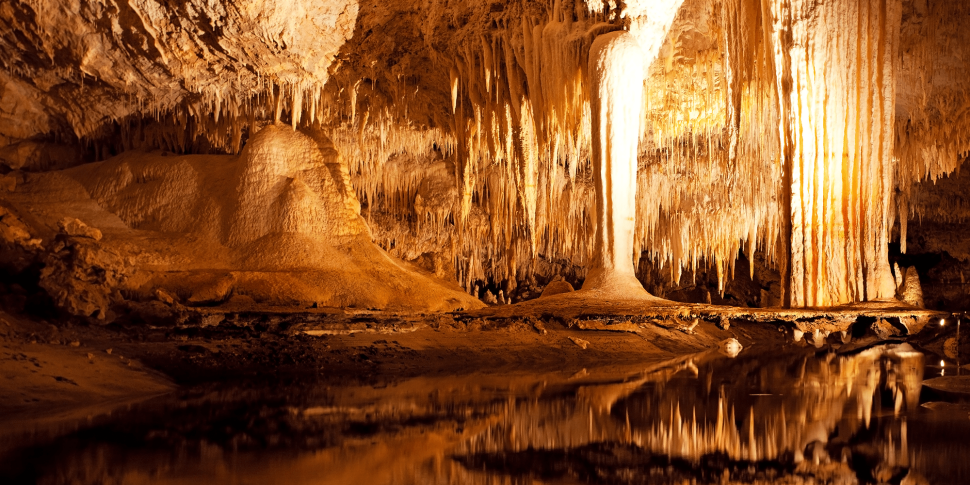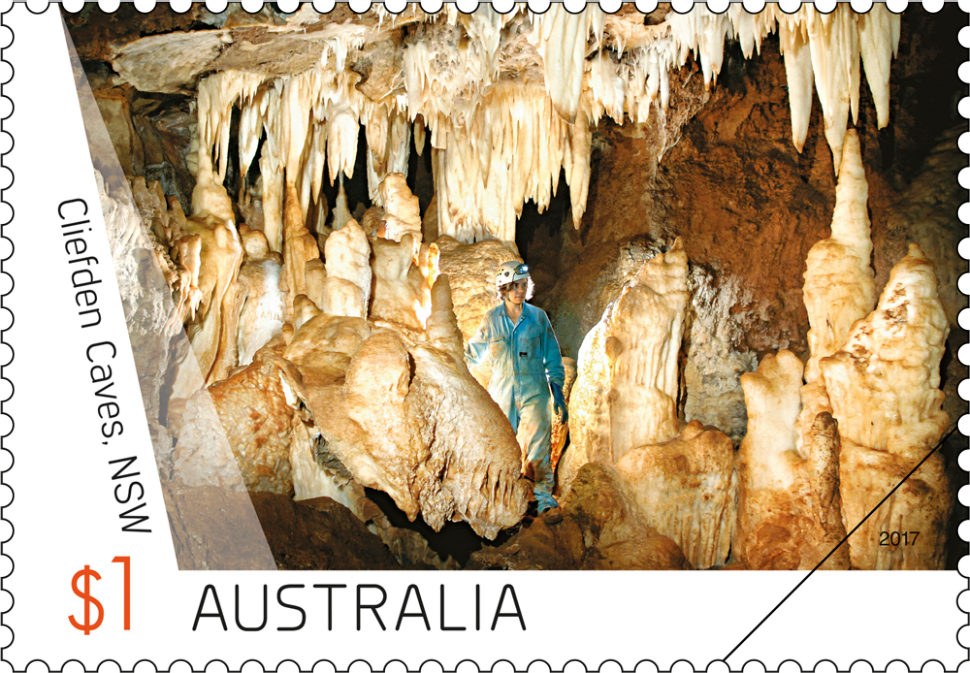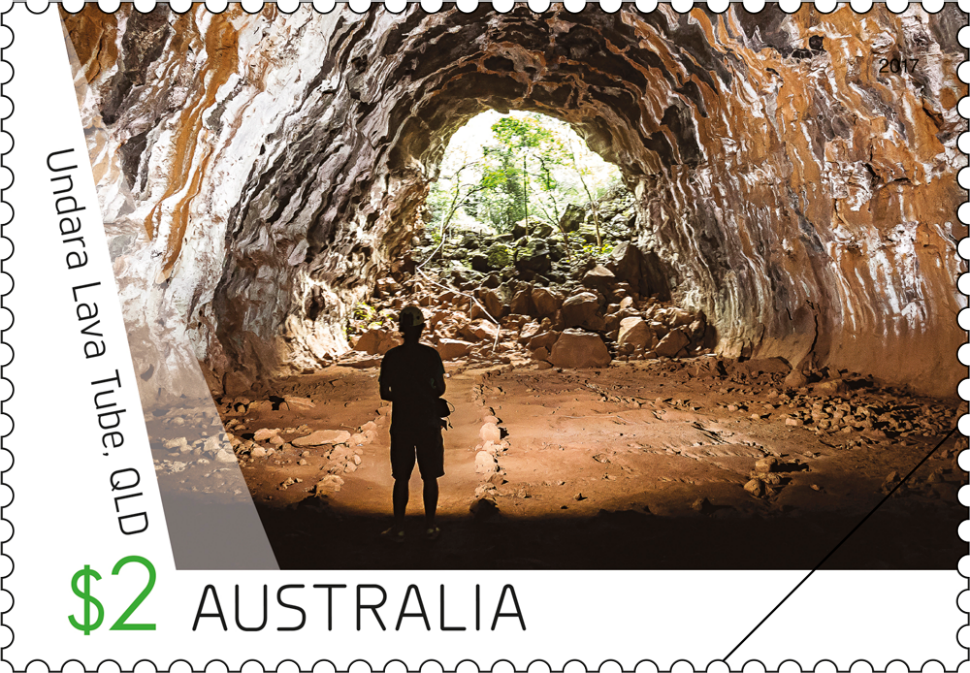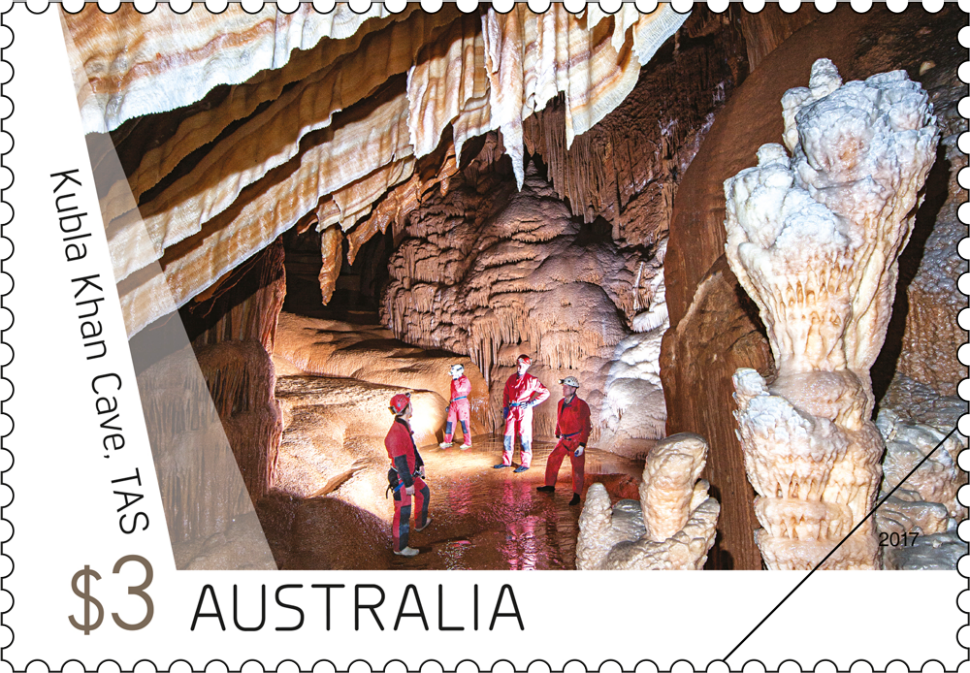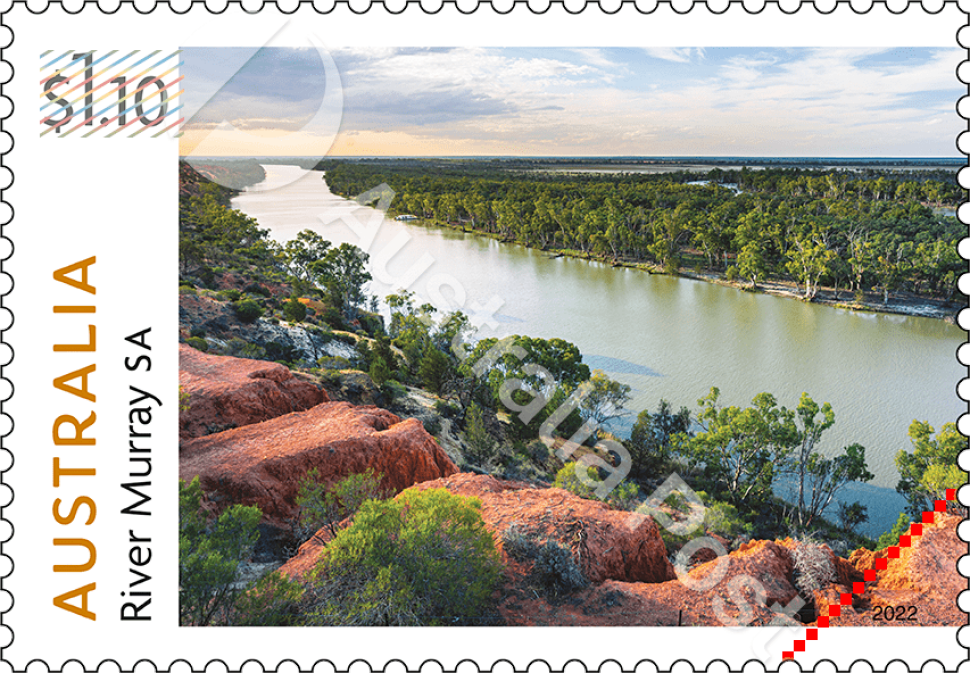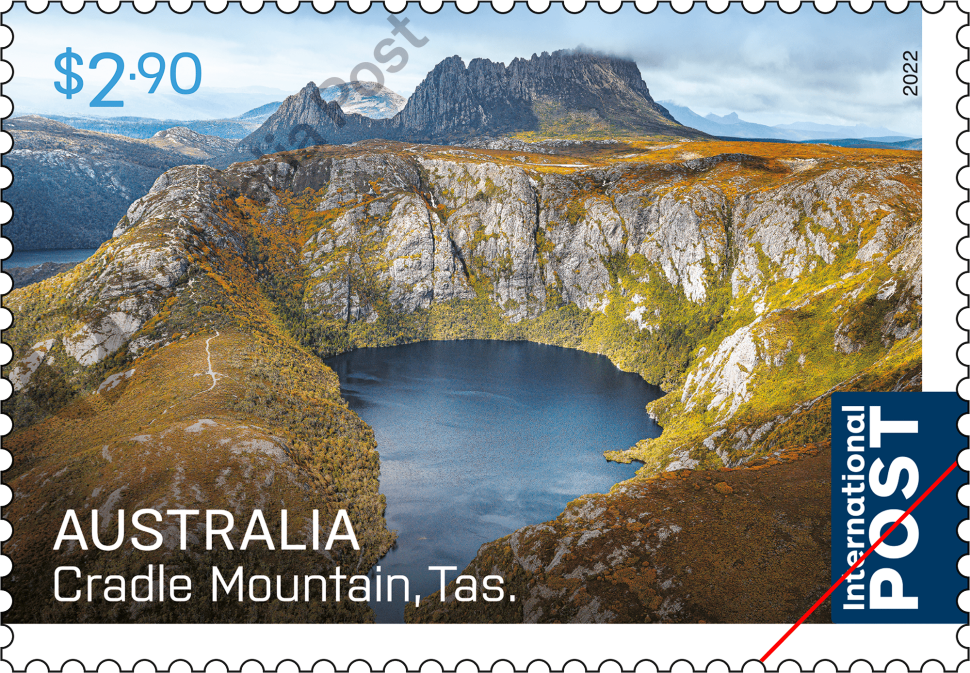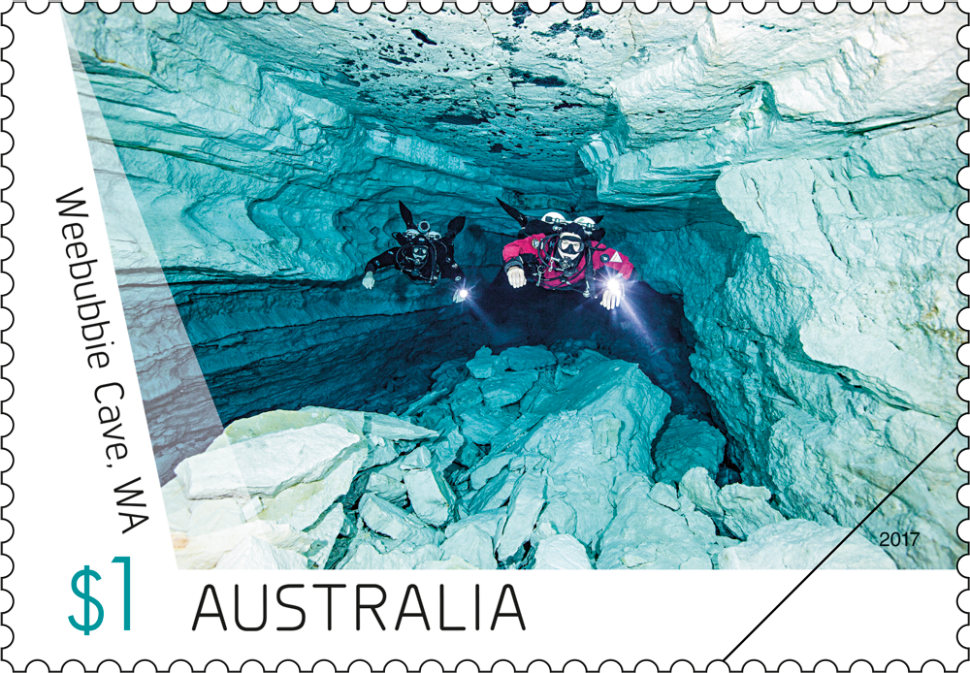Caves are important, yet often fragile, natural subterranean environments. Caves not only house minerals and speleothems, but also often provide a home for rare fauna and ancient fossil deposits.
Australia is home to many spectacular and highly significant caves. Some of the most impressive and pristine are those not generally accessible to the general public. This stamp issue presents four incredible and varied caves from around Australia.
Designer
Jo Mure, Australia Post Design Studio
Products released in this issue
- First day cover (blank, gummed, self-adhesive)
- Stamp pack
- Maxicards
- Self-adhesive booklet of 20 x $1
- Self-adhesive roll of 100 x $1
- Four postcards
Technical specifications
- Issue date
- 2 May 2017
- Issue withdrawal date
- 30 November 2017
- Denominations
- 2 x $1, 1 x $2, 1 x $3
- Stamp design
- Jo Mure, Australia Post Design Studio
- Product design
- Jo Mure, Australia Post Design Studio
- Printer
- RA Printing
- Paper - gummed
- Tullis Russell Red Phos
- Printer - rolls
- Pemara
- Paper - rolls
- C100/Raf Unik
- Printing process
- Offset lithography
- Stamp size
- 37.5mm x 26mm
- Perforations
- 13.86 x 14.6
- Sheet layout
- Module of 50
- FDI postmark
- Rockdale, NSW 2216
- FDI withdrawal date
- 31 May 2017
Located along the Belubula River, the Cliefden karst environment includes one of the most significant cave systems on private land in New South Wales and is also the site of the first discovery of limestone on mainland Australia in 1815. There are approximately 100 individual caves at Cliefden, which contain diverse speleothems, including rare pale-blue formations. There is also an abundance of fossil deposits. The stamp features the beautiful golden stalactites and stalagmites of the highly decorated Clown Room in Cliefden Main Cave. The stamp photograph was taken by Alan Pryke.
Weebubbie Cave, near Eucla in Western Australia, is a culturally significant site to the Mirning people. Weebubbie Cave was formed millions of years ago and is the deepest cave in the Nullarbor, which itself is made up of the largest continuous block of limestone in the world. The lakes of Weebubbie Cave are filled with water so crystal clear that visibility has been measured at depths greater than 150 metres. The stamp photograph was taken by Steve Trewavas.
Undara Volcanic National Park is traditional country of the Ewamian people and is situated around 300 kilometres south-west of Cairns, Queensland. Undara is home to one of the longest lava tube cave systems in the world (“Undara” means “long way”) and the longest in Australia. A hollow tube was created about 190,000 years ago by a single flow of lava. Surviving segments of the tube form caves and arches, including Mikoshi Cave, featured on the stamp in a photograph by Alan Pryke. Access to Undara Lava Tube is by guided tour.
Kubla Khan Cave is part of the Mole Creek Karst National Park, north of Cradle Mountain, Tasmania. Kubla Khan Cave and its formations are named after the Samuel Taylor Coleridge poem of the same name. More than two kilometres in length, Kubla Khan Cave is filled with incredible features such as the spectacular Silk Shop shawl formations, one of which is visible on the stamp in a photograph taken by Liz Rogers.
This content was produced at the time of the stamp issue release date and will not be updated.
